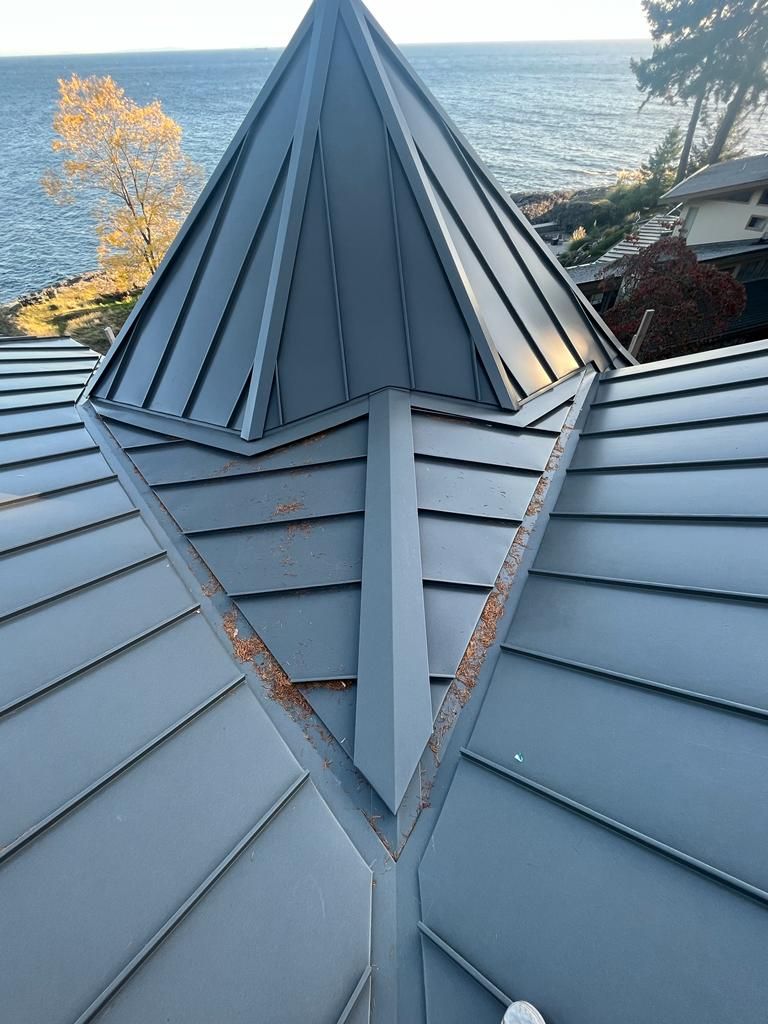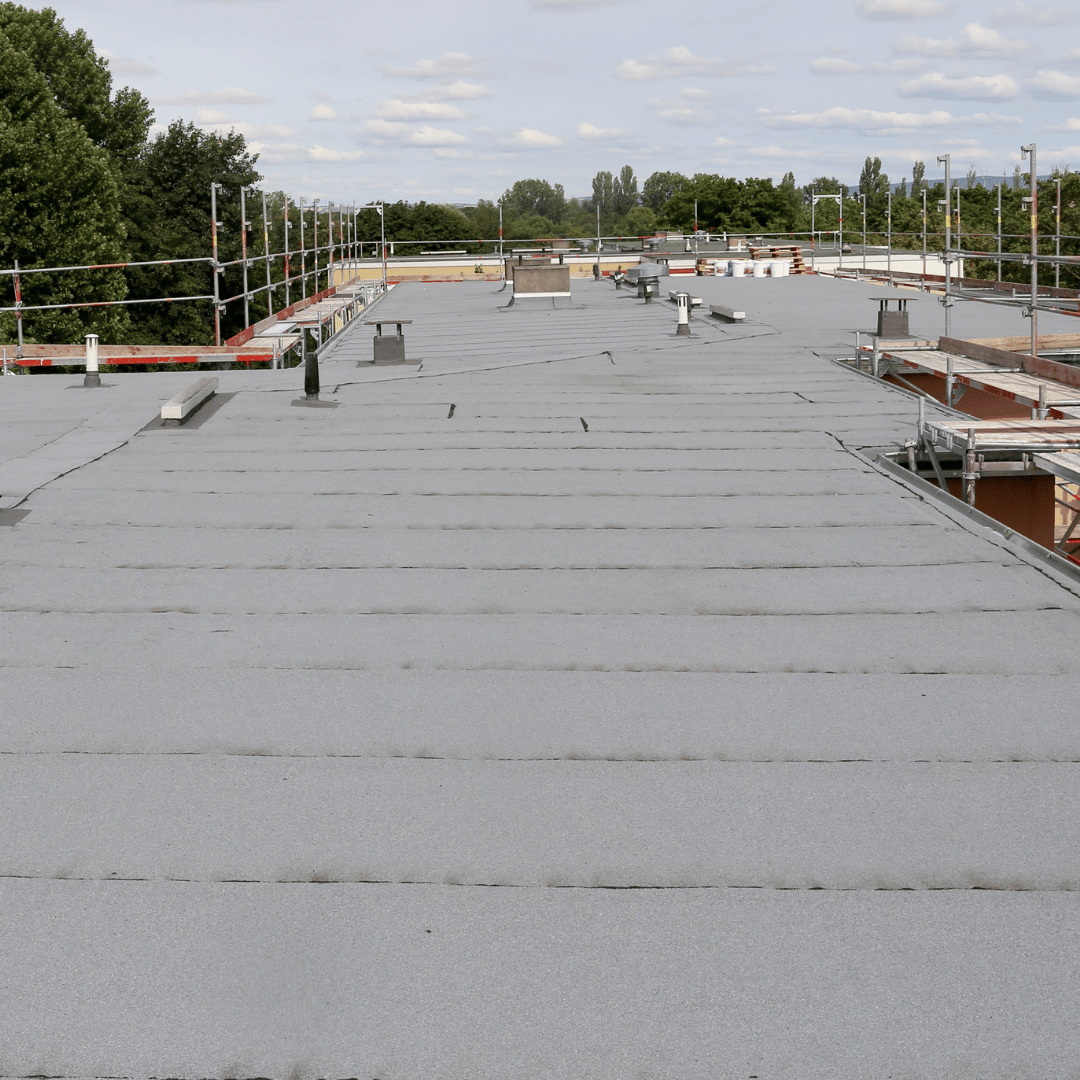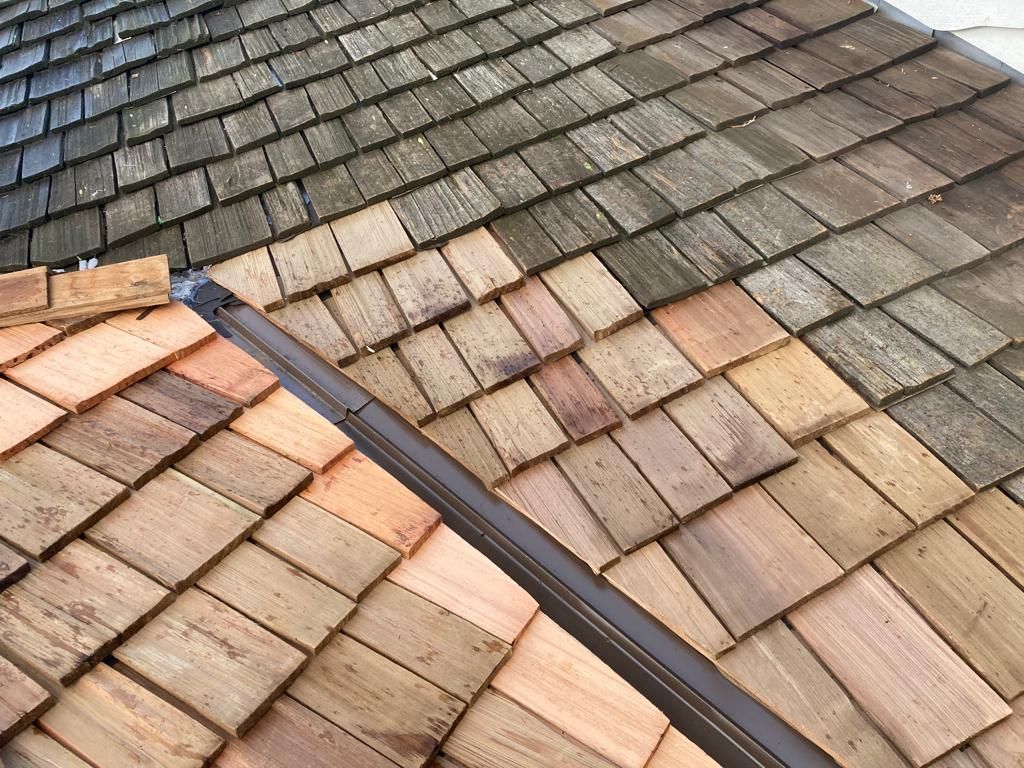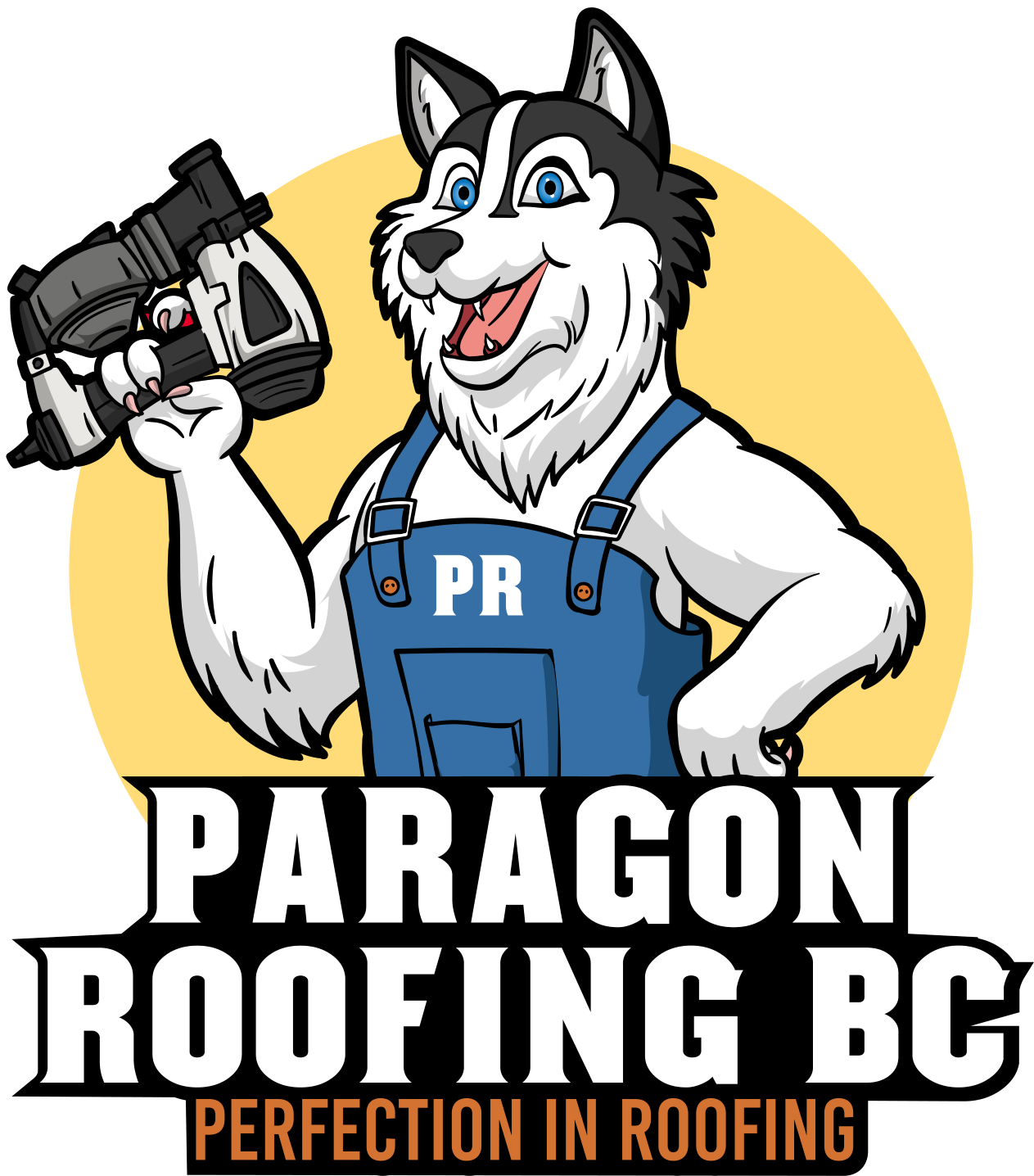Preventative Maintenance for Aging Roofs in Coquitlam: A Comprehensive Guide by Paragon Roofing BC
Roofs Need Love Too, Paragon Roofing BC's Here to Help!
THE CHALLENGES OF AGING ROOFS IN WINTER
I’ve been doing roofing work around Coquitlam, Vancouver, Surrey, and Delta for quite a while now, and let me tell you—old roofs can be like those dear old friends who need a little extra help getting around, especially during our harsh Lower Mainland winters. I remember a call from a frantic homeowner one January; a freak snowstorm had turned into ice within hours, and their aging roof started leaking in multiple places at once. Picture that phone call: water dripping into the kitchen, the homeowner doing a balancing act with a bucket while wearing thick winter socks. Within hours, my crew and I were up there with our gear, clearing ice dams, patching compromised shingles, and making the entire system weather-ready again. Those experiences stay with me because winter doesn’t mess around in these parts.
Aging roofs face their greatest test when heavy rain hits or when snow turns to slush and weighs down on older materials. It only takes a small crack or a missing shingle for water to sneak in, and then you’ve got a bigger problem on your hands—mold, warped ceilings, peeling drywall, you name it. Although I wouldn’t wish that kind of stress on anyone, the reality is that as your roof ages, proactive checks are your best friend.
Below, I’m going to open up about everything I’ve picked up in this field—practical knowledge, local building code tidbits, meteorological stats, and straightforward advice on what you can do yourself versus when to call in a professional. I want you to be prepared and relaxed, not fretting in the middle of a storm.
WINTER STORMS AND STATISTICAL INSIGHTS
Living in Coquitlam (and Greater Vancouver as a whole) means dealing with fairly wet conditions year-round, plus a few sneaky snow events in winter that can really put a strain on older roofs. According to Environment Canada data, Metro Vancouver can see an average of 1,200 to 1,500 millimeters of rainfall annually, with precipitation peaking between November and January. In Coquitlam specifically, it’s not unusual to see over 160 rainy days per year.
When you add the occasional blast of snow into that mix—sometimes anywhere from 10 to 30 centimeters in a single storm—your roof is dealing with more weight, more moisture, and more freeze-thaw cycles. Statistically, roofing failures spike during or just after these big weather events. From what I’ve observed locally, even if the official weather stats say moderate snow, that can mean trouble for older roofs, because once that moderate snow starts melting and refreezing, it becomes a heavier weight than folks realize.
Why Do Older Roofs Suffer More?
- Wear and Tear Over Time: Shingles can become brittle, flashing can corrode, and sealants can crack.
- Delayed Maintenance: Minor issues unaddressed over years can escalate when winter storms roll in.
- Design Limitations: Some older roofs weren’t built with today’s advanced materials or modern code standards.
So, it’s no wonder you see more roof leaks and failures in older homes during the worst winter storms. Unfortunately, it’s those smaller, hidden issues that get you when the temperatures drop below freezing and turn all that rain into ice.
LOCAL BUILDING CODE CONSIDERATIONS
Coquitlam and surrounding areas follow the BC Building Code, which specifies minimum standards for snow load, wind resistance, and water ingress. While I won’t get all technical on you, I’ll highlight a couple of key points:
- Minimum Snow Load Requirements: Depending on the elevation and the microclimate, older homes may not have been built to meet the current recommended snow load standards. Newer builds might have higher structural resilience, but older homes need thorough checks on structural elements such as rafters, trusses, and sheathing.
- Ventilation and Insulation Standards: The BC Building Code has guidelines for attic ventilation to help prevent condensation. Older homes often don’t have adequate venting, which can lead to a buildup of moisture and ice dams in winter.
- Flashing and Membrane: Standards for flashing around chimneys, vents, and skylights have evolved. Many older roofs have outdated materials or installation practices that simply don’t cut it in modern conditions.
If you’re in the Coquitlam region, especially in neighborhoods closer to the mountains, you may experience heavier snowfall than those in lower elevations like parts of Surrey or Delta. Staying aware of building code updates helps you ensure your roof can handle what winter throws at it.
CRUCIAL WINTER MAINTENANCE TASKS
While it’s natural to want to hibernate when the days get shorter and the sky is gloomier, your roof can’t exactly take a nap. Giving it a little TLC can be the difference between a peaceful holiday season and a frantic midnight leak control session. Let’s break it down.
Routine Inspections
Before winter even hits, a thorough inspection can pinpoint early warning signs—cracked shingles, lifted flashing, pooling water. I usually advise homeowners to schedule an inspection in the fall, but if you missed that boat, you can do one on a clear winter day. Even if you’re not comfortable climbing around up there, you can grab binoculars or use a camera with a good zoom. Look for:
- Shingle Damage: Curled, cracked, or missing shingles.
- Flashing Issues: Rust or gaps around chimneys and vents.
- Excessive Granule Loss: Dark patches in the gutters that indicate shingle granules are washing off.
- Sagging Areas: Any dip could mean compromised decking.
Gutter and Downspout Cleaning
You’d be surprised how many calls I get that start with, “Hey Harman, I’ve got water pouring out the wrong end of my gutter.” Clogged gutters lead to water backing up, which can infiltrate under shingles or freeze in place. Clean your gutters and downspouts at least twice a year, more often if you have tall trees around.
- DIY Tip: Scoop out the debris with a gutter scoop or your gloved hand. Then flush the gutters with a hose to ensure the downspouts are clear.
- Professional Help: If you have a multi-story home or steep roof, call a pro. Safety always comes first.
Attic Check-Up
Yes, the attic can be stuffy and cramped, but it’s your roof’s underbelly. A quick look can reveal:
- Signs of Leaks: Dark spots, mold growth, dripping water, or damp insulation.
- Ventilation: Proper airflow prevents condensation. If you notice stale air or high humidity, you might need additional vents.
- Insulation: Sufficient insulation can prevent heat loss, which in turn reduces the risk of ice dams forming.
Clearing Snow and Ice
Wet snow can be deceptively heavy. It’s like hauling around a loaded hockey bag (which, by the way, if you have kids playing hockey in the Lower Mainland, you know that feeling in your back!). If snow accumulates more than 6 inches, consider getting it removed—carefully—to prevent damage.
- DIY Tip: Use a roof rake with a telescoping handle. Start from the bottom edge, pulling the snow down gently. Don’t pry or hack at stubborn ice, or you’ll risk damaging the shingles.
- Professional Help: If it’s icy or you have a steep pitch, call someone with experience. One wrong step, and you could slip right off or harm your roof.
Flashing Upgrades
Older homes typically have older flashing, often made of lower-gauge metal. When that starts to corrode or pull away, water will find a route inside. In winter, it could freeze and expand in those gaps, making them bigger.
- DIY Tip: If you see small gaps, you can use a roof sealant around the edges as a temporary fix.
- Professional Advice: A full flashing replacement involves removing old metal and installing new, properly sized and sealed flashing.
AVOIDING ICE DAMS
I know the term “ice dam” sounds dramatic—and it is. Picture a mini glacier forming along the eaves of your roof. This blockage can force melting snow to pool behind it, and eventually, that water finds a path inside. Older roofs are especially vulnerable because they might not have adequate underlayment or insulation to keep the attic cool enough to prevent melting and refreezing.
Tips to Prevent Ice Dams:
- Keep Gutters Clean: If water can’t drain, it will freeze.
- Insulate Properly: Warm air escaping to the attic melts snow prematurely, which then refreezes at the eaves.
- Ventilation: Ensure ridge vents, soffit vents, or roof vents are not blocked.
- Heat Cables: These can help in dire situations, but they’re more of a backup plan rather than a perfect solution.
SMALL REPAIRS THAT MAKE A BIG DIFFERENCE
I’ve seen older roofs last an additional decade just by taking care of the little stuff. It’s sort of like changing the oil in your car regularly. Nobody sees the oil filter, but they sure notice when the engine fails.
Sealing Nail Holes and Minor Cracks
Roofing cement or sealant can patch up many small holes or cracks in a pinch. If you notice missing nails or small cracks around vents:
- DIY: Clean the area, apply roofing cement, and smooth it out.
- Pro-Level: For more extensive cracking, you may need to replace an entire shingle or re-fasten the roofing elements properly.
Replacing Worn Shingles
Sometimes, just a few shingles are compromised. Pulling them out and sliding in new ones can keep your roof watertight for another winter.
- DIY: Pry up the edges carefully with a flat bar, remove old nails, and align the new shingle.
- Pro-Level: If a large section of shingles is failing, you might look at partial re-roofing.
WINTER DISASTER EXPERIENCES
Over the years, I’ve been called out to some intense winter scenarios:
- Midnight Leak in Coquitlam: A family woke up to water pouring down a bedroom wall. Turned out, a small patch of cracked shingles let melting snow seep in. By the time we finished, I felt like I’d spent the night in a swimming pool.
- Ice Dam Catastrophe in Surrey: After multiple freeze-thaw cycles, ice dams built up along the eaves. The water ended up dripping inside the kitchen cabinets. We spent a whole day carefully chipping away ice and reinforcing the area with new underlayment.
- Windstorm Worries in Delta: High winds knocked off a bundle of shingles on an already aging roof, exposing the underlayment to rain. We installed temporary tarps to keep them dry until we could do a full inspection and repair.
These experiences highlight why winter preparedness is so crucial. Nobody wants to ring in the New Year with an impromptu waterfall in the living room.
DO-IT-YOURSELF VS. CALLING A PRO
I love when homeowners take the initiative because it shows pride of ownership. But let’s be real—your safety matters more than anything. If your roof is steep or you notice major structural issues, or it’s icy up there, call a professional. However, there are plenty of tasks you can handle yourself with a bit of elbow grease.
DIY Tasks:
- Gutter cleaning (on single-story homes, with caution)
- Minor caulking and sealing around vents
- Checking attic insulation levels
- Using a telescoping roof rake for light snow removal
Professional Tasks:
- Major shingle replacements or partial re-roofing
- Flashing replacement
- Structural modifications to support modern snow load requirements
- Resolving extensive water damage and mold in the attic
When in doubt, weigh the risk of injury or further damage versus the cost of professional help. In my experience, if you’re up there gripping the ladder with shaky hands, do yourself a favor and let someone else handle it.
LONG-TERM STRATEGIES FOR AGING ROOFS
As your roof nears the end of its natural lifespan (which could be 20–25 years for asphalt shingles, or 40–50 years for metal, depending on materials and maintenance), it’s time to strategize. Proactive replacements or retrofits can save money in the long run and help you sleep better during those intense coastal storms.
Regular Maintenance Schedule
Instead of sporadic checks, set up an actual timetable:
- Spring: Look for damage from winter.
- Fall: Prep for upcoming storms.
- Winter (milder days): Quick visual checks after major weather events.
Upgrade to Better Materials
If you’re nearing a replacement, consider modern materials that handle moisture and cold better—like composite shingles, rubberized underlayment, or metal roofing. They cost more upfront, but you can rest easy when the forecast calls for freezing rain or another atmospheric river.
Ventilation and Insulation
Many older homes simply don’t breathe well enough in the attic. Adding soffit vents, ridge vents, or gable vents can drastically improve airflow. Pair that with updated insulation, and you’ll have less risk of condensation and ice dams. Plus, you’ll stay cozier in the winter and cooler in the summer.
ATTIC MOLD: THE HIDDEN THREAT
Let’s talk mold, since it’s something I’ve come across a lot in the damp Lower Mainland climate. You might wonder: “What does attic mold have to do with roof maintenance?” Actually, a ton. If there’s a leak or inadequate ventilation, moisture accumulates up there. Over time, mold will grow on wooden rafters and decking. It often remains out of sight until someone either starts smelling something musty or sees black spots on the wood.
Early Signs:
- A lingering damp odor when you open your attic hatch
- Dark or fuzzy patches on wood surfaces
- Higher humidity in the attic than normal
Mold might not always pose an immediate structural threat, but it can impact your home’s air quality and eventually compromise the integrity of wooden elements if it’s left unchecked. Spotting it early during a winter check can save you from more extensive treatments down the road.
DEALING WITH HEAVY RAINFALL
Yes, we all joke about carrying an umbrella everywhere or wearing water-resistant shoes in Vancouver and Coquitlam, but that rain can do a number on older roofs. Over time, that relentless downpour can seep into every tiny nook and cranny.
Rain-Specific Tips:
- Check Valleys: The valleys where two roof planes meet see some of the heaviest water flow. If they’re lined with metal flashing, check for corrosion. If they’re lined with shingles, ensure no edges are lifting.
- Look at Chimneys and Skylights: Water can pool around these structures if the flashing is old or damaged.
- Trim Overhanging Branches: Constant drips from branches can accelerate shingle wear, and leaves can clog gutters.
When the forecast calls for days of heavy rain, a simple once-over of your attic and exterior could help you spot potential leaks early.
EMERGENCY TARPING TIPS
Every once in a while, we get hammered by a storm so fierce that water starts pouring in. In a pinch, a sturdy tarp can protect your interior until you can arrange a more permanent fix. It’s not elegant, but it can be a lifesaver—especially if you have an older roof you’ve been meaning to replace but just haven’t gotten around to it.
- Pick a Heavy-Duty Tarp: Thicker is better.
- Secure the Edges: Use roofing nails with plastic caps or wooden boards secured along the edges. Make sure you anchor it above the potential leak area and run it over the ridge if possible, so water doesn’t seep underneath.
- Be Safe: Trying to tarp in high winds or during a downpour can be dangerous. Wait for a lull in the storm if you must do it yourself.
A WORD ON INSURANCE
Many homeowners ask me if their insurance covers winter roof damage. Policies vary, but typically, if the damage is sudden and due to a covered peril (like a major storm), you might be covered. However, insurance companies often exclude problems that arise from neglect or an aging roof in disrepair.
What to Keep on Hand:
- Photos and Documentation: Before and after pictures of your roof can help speed up claims.
- Maintenance Records: Show that you’ve been proactive. If the insurer sees you’ve done your due diligence, they’re more likely to process your claim without fuss.
- Professional Inspection Reports: If you had a pro check your roof six months before a storm, that can be compelling evidence that you maintained it properly.
DIY SAFETY REMINDERS
Roofs can be slippery when wet or icy—seriously, no joke there. If you’re considering heading up a ladder, here are a few safety basics:
- Proper Footwear: Rubber-soled shoes or boots with good grip.
- Harness: If your roof is steep, use a safety harness secured to a stable anchor point.
- Dry Day: Avoid climbing up if it’s raining or if ice is present.
- Ladder Stability: Make sure the ladder is on level ground, and if possible, have someone hold it while you climb.
I’ve seen people slip and experience nasty falls just because they thought a five-minute job wasn’t worth the extra precautions. Trust me—one slip can lead to months of pain.
DRAINAGE MATTERS
Gutters aren’t the only drainage components you should worry about. Some
older roofs have limited water management systems or poorly placed downspouts that dump water near the foundation. That can cause basement leaks or foundation cracks down the line.
- Downspout Extensions: Make sure they direct water at least a few feet away from the house.
- Splash Blocks or Drainage Trenches: For heavy rainfall, these help disperse water more effectively.
- Landscape Grading: If the yard slopes toward the house, you could end up with roof water heading straight into your basement.
While not strictly “roof maintenance,” good overall drainage is a key part of a healthy home ecosystem, especially during the wet winter season.
VENTILATION AND TEMPERATURE BALANCE
One aspect I see folks overlook is how heat loss through the roof can cause certain winter headaches. When heat escapes through an under-insulated or poorly sealed attic, it warms the roof surface, melting snow prematurely. Then, that melted water refreezes at the colder eaves, creating ice dams.
- Air Sealing: Check for gaps around attic hatches, electrical wiring, or plumbing vents.
- Attic Floor Insulation: Upgrading to at least R-40 or more, depending on local codes, can help maintain a more consistent attic temperature.
- Soffit and Ridge Vent Coordination: You want cool, dry air entering at the soffits and exiting at the ridge vents.
HOW TO SPOT STRUCTURAL ISSUES
Older roofs sometimes suffer from hidden structural problems. Rot, termite damage (less common in our area but still possible), or repeated water ingress can weaken rafters or trusses.
- Look for Sagging: If your roofline appears wavy from a distance, that’s a sign of potential structural issues.
- Check Attic Rafters: Use a flashlight to spot any splits or heavy discoloration in the wood.
- Bounce Test: If you can carefully walk on the roof and notice sponginess, that’s a red flag. However, do this only if you’re confident it’s safe.
If you find anything concerning, it’s time to consult a structural engineer or a roofing professional experienced in older home renovations.
RETROFITTING AN OLDER ROOF
Sometimes, you don’t want to do a complete overhaul but need more reinforcement. Older roofs can often be retrofitted:
- Sistering Rafters: Adding new boards alongside existing rafters for extra strength.
- Upgraded Sheathing: Replacing or reinforcing thin or damaged plywood so it can handle more weight.
- Ice and Water Shield: Adding a self-adhering membrane along eaves and valleys to prevent water infiltration.
These can extend the life of your roof and make it more resistant to those brutal winter conditions we get around here.
LOCAL CLIMATE QUIRKS
Coquitlam, being close to the mountains, can get slightly more snowfall and cooler temperatures than Vancouver’s downtown core. Surrey and Delta, meanwhile, might get hammered by heavy rains more frequently, with occasional windstorms that tear off loose shingles. Knowing these local differences helps you plan. For instance, if your home is perched on the hillside in Coquitlam, you might want to invest in a sturdier material or more robust snow load protection. If you’re in Delta, perhaps focus on wind-resistant shingles and top-tier gutter systems.
STAYING HUMBLE IN THE FACE OF NATURE
I’ve been on roofs in the scorching summer sun, pouring rain, hailstorms—you name it. If there’s one thing I’ve learned, it’s that Mother Nature does what she wants, and we’re just along for the ride. No matter how sturdy your roof is, it pays to show it some respect. Check it, maintain it, and it’ll serve you well, especially when winter storms decide to turn the Lower Mainland into a wet, icy mess.
REAL STORIES OF QUICK RECOVERY
- Leaky Skylight Fix: I remember patching a skylight seal in Port Moody (right next to Coquitlam) in the middle of a blustery December. Water was streaming down a beautiful wooden beam inside the house. A few hours and a new flashing kit later, the leak stopped. The homeowner told me it was like immediate relief from a stressful migraine.
- Chimney Flashing Replacement: An older chimney in East Vancouver had a gap in its flashing so big you could almost see daylight through it. We replaced that section, sealed it properly, and the homeowner said they slept like a baby afterward, not worrying about the next rainstorm.
- Tree Damage Repair: In Surrey, a large branch snapped off in a windstorm and punctured a hole right through the attic. We replaced the damaged plywood, installed new shingles, and cleared debris. By the end of it, the family was grateful they didn’t have to move out during repairs.
I share these because aging roofs are not a lost cause. They can be fixed, reinforced, and made good as new with the right approach and timely care.
GOING GREEN WITH ROOF MAINTENANCE
Some folks want to make eco-friendly decisions. If you’re considering re-roofing, there are shingles made from recycled materials or metal roofs that can be recycled when they’re eventually replaced. Even small steps—like ensuring your attic insulation is eco-friendly or using low-VOC sealants—contribute to a greener Coquitlam. Plus, a well-insulated roof lowers your energy bills, keeping your home warmer in winter and cooler in summer without over-reliance on heating or air conditioning.
BUILDING A PREVENTATIVE MINDSET
A lot of us wait for a big problem before calling in repairs. But one of my biggest pieces of advice? Act before issues escalate. Schedule that yearly inspection, clear those gutters, or swap out a few worn shingles. A half-hour chore can prevent a thousand-dollar water damage bill.
Take it from me: the best phone calls I get are the ones where homeowners say, “I just want to make sure everything’s okay up there.” That’s the sweet spot—handling small stuff, building confidence in your roof’s condition, and never having to bail water into a bucket at midnight.
TRUST THROUGH TRANSPARENCY
When it comes to trustworthiness, I’ve always believed in transparency. If you’re planning some DIY moves, I’ll give you honest tips to do them safely. If you need a pro, I’ll tell you that too. The important thing is you get accurate, helpful advice.
- Always Keep Receipts: If you buy sealant, shingles, or other materials, file those receipts. You never know when you might need to show evidence of your maintenance efforts.
- Document the Repairs: Snap a quick photo on your phone before and after you fix something. If you ever need an insurance claim or want to sell your home, that documentation proves you took care of it.
Over the years, I’ve seen neighbors sharing ladders, teaching each other gutter-cleaning hacks, and exchanging references for roofing pros. That sense of community is priceless. Let’s keep it going by being transparent and helpful to one another.
SETTING EXPECTATIONS FOR OLDER ROOFS
If your roof is over 20 years old, it’s not going to behave like a brand-new installation. You might need more frequent maintenance visits or be ready to address issues as they pop up. A good rule of thumb is to budget a small amount each year for potential roof repairs. That way, you’re not caught off guard if a winter storm rips off some shingles or if you discover a minor leak.
Budgeting Tips:
- Annual Roof Fund: Even $200–$300 a year set aside can ease the pain of unexpected costs.
- Plan for a Re-Roof: If your roof is nearing its expected lifespan, start researching quotes 2–3 years beforehand so you’re not scrambling in an emergency.
Winter storms in Coquitlam and the broader Lower Mainland can be intense, especially if your roof is pushing its golden years. Hoping this guide will help and we are here for you too!
Stay dry Coquitlam,
Harman
How can I tell if I have enough attic ventilation?
Look for signs of excess moisture, mold, or high attic temperatures. You can also have a professional measure airflow.
Should I worry about moss growth on my shingles?
Moss can lift shingles and trap moisture. Removing it gently and treating the area can prolong your roof’s life.
Can I install new shingles over old ones?
While sometimes done, it’s not ideal for older roofs. You’re better off removing the old layer to inspect for hidden issues.
Is it expensive to add more attic insulation for ice dam prevention?
Costs vary, but it’s generally less expensive than dealing with water damage from recurring ice dams.
Can gutter guards help with winter maintenance?
They can reduce clogs, but they’re not a substitute for occasional cleaning. Some gutter guards also limit water flow if ice forms on top.
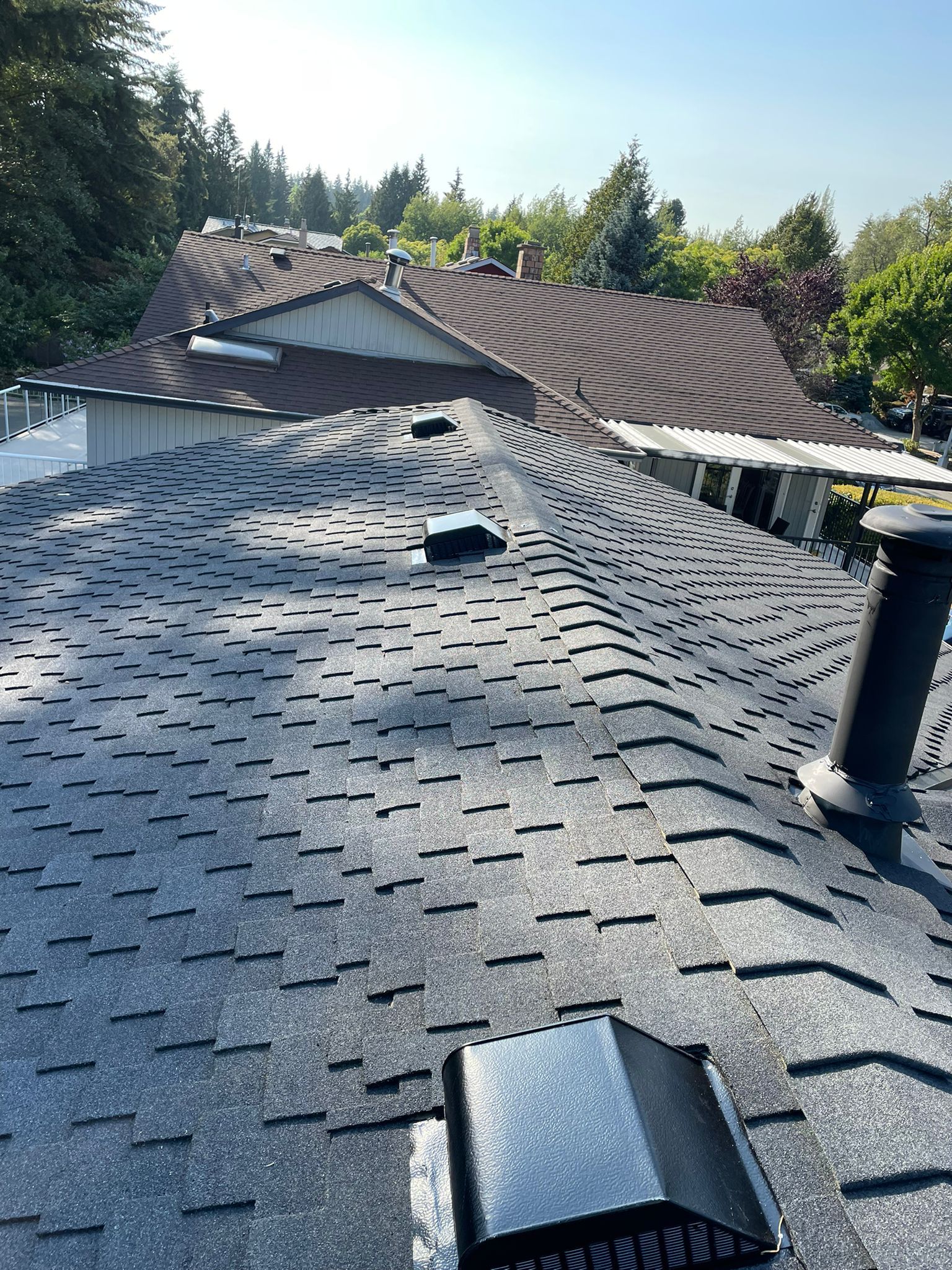
Our Roofing Blog
Have more questions about roofing?
Check out our FAQs or give us a call today to speak to an expert roofer in Vancouver Lower Mainland, BC. We're here to help our neighbours make educated decisions about their roof. For our team, we value helping clients save money while making their roofs last.

